We had a six inch layer of snow fall in the Lehigh Valley. Before the storm, road salt slurry was applied to the road surface and snow plows were jockeying around. The city-dwellers were scurrying about to get pavements and vehicles cleared.
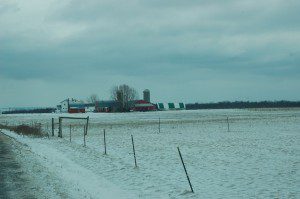 Another way to look at snow fall is the agronomist’s view. Snow provides soil cover that tends to insulate the soil and prevents soil temperatures from constantly fluctuating throughout the winter, which leads to freezing and thawing. In certain soil types this freezing and thawing of water in the soil, a process which causes what is known as “frost heaving,” can be detrimental to winter annual legume forage crops, cover crops and some perennial crops, especially alfalfa. As a result of this process, roots can be damaged and “heaved” out of the soil. Snow buffers the soil and helps to prevent this.
Another way to look at snow fall is the agronomist’s view. Snow provides soil cover that tends to insulate the soil and prevents soil temperatures from constantly fluctuating throughout the winter, which leads to freezing and thawing. In certain soil types this freezing and thawing of water in the soil, a process which causes what is known as “frost heaving,” can be detrimental to winter annual legume forage crops, cover crops and some perennial crops, especially alfalfa. As a result of this process, roots can be damaged and “heaved” out of the soil. Snow buffers the soil and helps to prevent this.
In areas where snow cover is maintained, it has an insulating effect; the snow keeps a constant temperature of 32F. I call this the “igloo-effect”. This protects perennial and winter annual legumes from exposure to subfreezing “cell tissue-bursting” frigid temperatures.
Soils without the snow blanket can freeze quite deep into the profile. Frost layers in exposed soils will extend deeper, which can damage root systems at these deeper levels.
In addition, snow cover is beneficial coming out of winter, maintaining cooler plant and soil temperatures, which prevents plants from starting to grow too early when we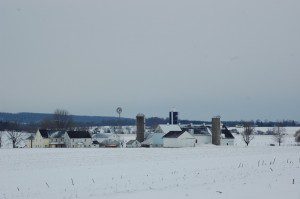 get prematurely warm air. Warm temperature trends occurring early in the late winter-early spring season may kick-start plant growth, sometimes too early. Lingering snow cover during a prolonged early warm spell is actually beneficial.
get prematurely warm air. Warm temperature trends occurring early in the late winter-early spring season may kick-start plant growth, sometimes too early. Lingering snow cover during a prolonged early warm spell is actually beneficial.
Now here’s the kicker. It’s a little known fact that snow absorbs certain nitrogen compounds that are suspended in the atmosphere. The snowflakes’ physical ice structure encases the nitrogen compounds from the atmosphere in their crystal structure as they form. The atmosphere and air we breathe is approximately 78% Nitrogen (N2). There are also nitrogen oxides (NO) in the atmosphere, some naturally occurring from lightning. The oxides soon form nitrogen dioxide (NO2). Nitrogen oxides are also accumulated in the atmosphere from emissions of fossil fuel combustion (automobile engines, coal and oil in factories and electric power plants). These emissions in the atmosphere are collectively known as nitrogen oxides and designated as NOx. When snow falls it collects atmospheric nitrogen. The combination of rainfall and snow storms can deposit somewhere between 2 to 12 lbs of nitrogen per acre per year. In areas of high snowfall this may be more. Regions with higher levels of NOx will typically have snowfalls with higher concentrations of nitrogen.
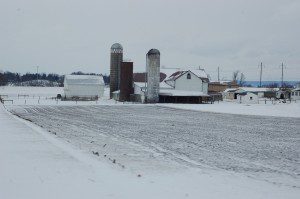 Depending on the area and amount of snow, nitrogen will be brought down to the soil surface in the snow. Denser (wetter) snowflakes contain more moisture and less air so they have less nitrogen. Light flaky or fluffy snowflakes contain more air and therefore have more nitrogen in them.
Depending on the area and amount of snow, nitrogen will be brought down to the soil surface in the snow. Denser (wetter) snowflakes contain more moisture and less air so they have less nitrogen. Light flaky or fluffy snowflakes contain more air and therefore have more nitrogen in them.
Late fall/early winter and late spring snowfalls are most beneficial because the ground is not frozen. These deposits of snow gives small amounts of nitrogen to the soil; as the snow thaws there is a slow-release of nitrogen into the soil profile. As it melts slowly, the nitrogen can be absorbed by the soil. With this slow release of nitrogen, soil microbes can absorb or fix this nitrogen as things start to warm up in the spring, converting it to ammonia (HN3) or nitrates (NO3–) which can be utilized by plants or by other microbes in the soil.
Sulfur is another element that may be in the atmosphere in the gaseous form of sulfur dioxide. Sulfate and nitrate are the dominant dissolved forms of sulfur and nitrogen in precipitation and snow. Biological cycling of sulfur and nitrogen persists in cold weather, despite below freezing air temperatures. Much of this activity occurs in soils, since an insulating snow layer keeps soil temperatures warm enough for a range of biological processes.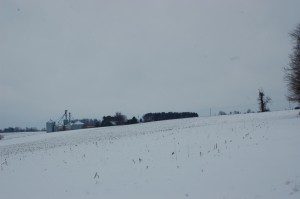
Accumulations of these elements will depend on the eco-zone. In the New England states where there is often high snowfall accumulation, sulfate and nitrate are released in concentrated waves of snowmelt, which can cause acidification in poorly buffered soils, ultimately threatening the health of acid-sensitive biota. A pulsed release of acidic snowmelt runoff can also cause problems in lakes and rivers.
In the lower Mid-Atlantic and southern states this is not necessarily the case, and the contributions of sulfur and nitrogen can add small amounts of nitrogen and sulfur to the total overall fertility of an agricultural soil.
Winter snowfall on frozen ground may not be as beneficial if it melts and runs off the soil surface, instead of being absorbed into the soil. If the snow melts quickly enough when the ground is still frozen, the snowmelt will run off and not be absorbed into the soil.
Certainly rainfall also contains nitrogen, but excessive amounts may run right off the soil with the rainfall if the soil is saturated. Snowmelt, in contrast, is typically 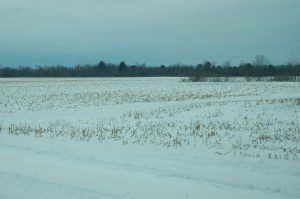 slower and the nitrogen in the snow will be made slowly available to the soil as it melts.
slower and the nitrogen in the snow will be made slowly available to the soil as it melts.
Speak to an expert at King’s AgriSeeds now at 1-717-687-6224 or email us at [email protected].
